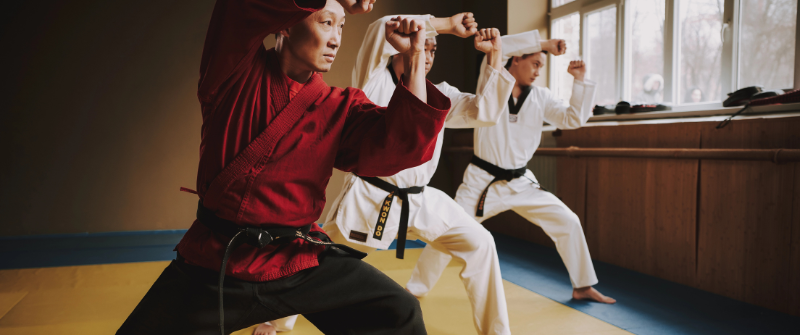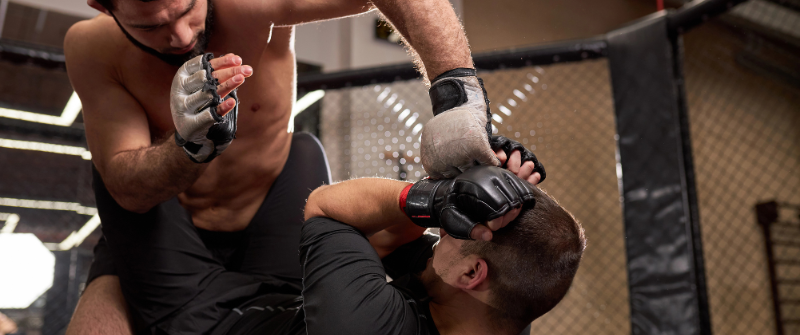
- by NEXO Team
- November 3, 2025
Earning a black belt is an achievement that represents years of focus, discipline, and persistence. But for Jiu-Jitsu coaches, that milestone is just the foundation. The coaches who sustain long, successful careers don’t stop developing once they start teaching. They study new techniques, update their safety knowledge, and stay informed about changes in the industry.
In modern gyms, that commitment to learning has real business value. It strengthens a coach’s reputation, improves student retention, and reduces liability risks that can threaten an academy’s growth.
A black belt shows mastery of the art. Continued education shows mastery of responsibility.
How Coaching Has Evolved
The role of a Jiu-Jitsu instructor today looks very different from what it did a decade ago. Coaches are now expected to be educators, safety officers, communicators, and business operators all at once. Technique is still central, but the standard of professionalism has risen.
Parents and adult students alike want to know they’re training under qualified leadership. They expect programs that are structured, consistent, and safe. Continuing education meets those expectations by helping instructors develop stronger communication skills, maintain safety credentials, and build credibility both on and off the mat.
A well-trained coach earns trust faster, teaches more effectively, and strengthens the reputation of their academy.
Experience Alone Isn’t Enough
Years on the mat bring intuition, but they don’t automatically translate into effective instruction or sound business practices. Experience is valuable, but without structured learning, it’s easy to fall behind on evolving standards.
For example, competition rules change. Medical research on injury prevention advances every year. Best practices for gym management shift as technology and liability requirements evolve. Coaches who make time for professional development are better prepared to adapt to those changes.
A continuing education plan can include courses on anatomy, safety protocols, CPR certification, child protection training, and risk management. Each topic adds another layer of protection for both students and the business.
Education is the one investment that strengthens every part of a gym, from the instruction on the floor to the stability of its operations.
Also Read: Women-Only BJJ Classes: A Guide to Inclusion, Safety, and Risk Mitigation
The Connection Between Education and Student Trust
Trust is one of the most valuable assets a gym can earn. It builds loyalty, drives word-of-mouth growth, and creates a safer training culture.
When coaches show that they’re committed to ongoing learning, students and parents notice. A CPR-certified coach who can respond in an emergency communicates care. A coach who takes injury-prevention courses sends a message that student safety is a priority, not an afterthought.
Transparency is another powerful tool. Sharing information about credentials, insurance coverage, or safety policies gives students and parents confidence in how the academy operates. Trust doesn’t come from slogans, it comes from consistent professionalism that’s visible in daily routines.
Continuing Education in Practice
Continuing education takes many forms, and coaches can choose the path that fits their goals and responsibilities. Common options include:
- Safety and Emergency Certification – Programs in First Aid, CPR, and AED use prepare instructors for real-world emergencies.
- Injury Prevention and Recovery Training – Courses in movement science, warm-up protocols, and post-training recovery help students train longer and avoid overuse injuries.
- Instructional Development – Coaching workshops improve communication, class structure, and student engagement.
- Business and Risk Management Education – These courses teach essential topics like employment classification, liability waivers, and insurance requirements. NEXO often provides educational resources that help gym owners strengthen compliance and reduce exposure.
- Mentorship and Peer Learning – Observing other instructors or participating in seminars builds perspective and keeps teaching methods current.
Education isn’t a one-time achievement; it’s a system that reinforces both safety and credibility over time.
Also Read: Why Student Injuries Are the #1 Risk for Jiu-Jitsu Gym Owners and How to Prepare
The Business Advantage of Staying Educated
Parents and adult students don’t just look for technical skill, they look for professionalism. A gym that invests in continuing education naturally attracts more committed members because it reflects stability and care.
Highlighting certifications, safety courses, and ongoing training builds credibility in marketing and within the community. It also positions the academy as a safe environment where students can progress with confidence.
From a risk management perspective, continued education also lowers exposure. Coaches who follow structured safety practices experience fewer accidents, which can help minimize claims and support better insurance outcomes. In a competitive market, that professionalism becomes a clear advantage.
Education isn’t just a way to improve instruction, it’s a way to protect and grow the business.
Creating a Culture of Learning Inside the Gym
A learning culture starts with leadership. When owners and head instructors prioritize education, the rest of the team follows.
Paying for staff certification renewals, setting time aside for workshops, or hosting internal training sessions reinforces that learning is part of the job. Encouraging mentorship between experienced and newer coaches keeps knowledge flowing and ensures consistency across classes.
Publicly recognizing these achievements also matters. When students see their instructors completing certifications or attending seminars, it reinforces a message of professionalism and accountability. That visibility strengthens retention and gives families another reason to trust the program long-term.
Education isn’t just personal growth, it’s a tool for team building and community trust.
Why NEXO Promotes Education as Part of Risk Management
At NEXO, we view continuing education as an essential part of gym protection. Insurance policies reduce financial exposure, but prevention begins long before a claim ever happens.
Coaches who stay current on safety standards, emergency protocols, and teaching best practices reduce the likelihood of accidents. That proactive approach creates safer gyms and more reliable coverage outcomes.
NEXO supports that effort by offering tailored insurance solutions for martial arts academies, fitness gyms, and instructors. Our team works closely with business owners to ensure they understand their coverage and how it aligns with their operations. We believe the best defense against liability is education combined with strong, well-designed protection.
Also Read: Are You Personally Liable? What Every Jiu-Jitsu Instructor Should Know
Conclusion: Education Strengthens Every Level of the Gym
Continuing education isn’t just a professional upgrade, it’s a foundation for long-term success. It strengthens teaching, enhances safety, and builds credibility that lasts.
Instructors who keep learning show that mastery isn’t about perfection; it’s about consistency and responsibility. That mindset creates safer gyms, better business outcomes, and communities built on respect and trust.
NEXO shares that philosophy. Our goal is to help coaches and gym owners protect what they’ve built so they can focus on leading, teaching, and growing.
A black belt might mark the end of one journey, but continued education is what keeps every gym, and every leader, moving forward. Contact today!
Categories
Fill out a short form to contact us with your questions or to receive a customized quote.
Recent Posts
-
 NEXO’s Affinity Program: How Fitness Suppliers and Associations Can Partner for Profit and Protection
December 5, 2025
NEXO’s Affinity Program: How Fitness Suppliers and Associations Can Partner for Profit and Protection
December 5, 2025 -
%20(1).png) How to Insure an MMA Gym Without Paying for Coverage You Don’t Need
December 5, 2025
How to Insure an MMA Gym Without Paying for Coverage You Don’t Need
December 5, 2025 -
 Mastering Liability for Jiu-Jitsu Tournaments and Martial Arts Events
December 5, 2025
Mastering Liability for Jiu-Jitsu Tournaments and Martial Arts Events
December 5, 2025 -
 From Zen to Zoning: What Every Yoga and Pilates Studio Owner Should Know Before Signing a Lease
December 5, 2025
From Zen to Zoning: What Every Yoga and Pilates Studio Owner Should Know Before Signing a Lease
December 5, 2025 -
%20(1).png) Why Your Referral & Loyalty Program Can Impact Your Insurance Rates
December 5, 2025
Why Your Referral & Loyalty Program Can Impact Your Insurance Rates
December 5, 2025
